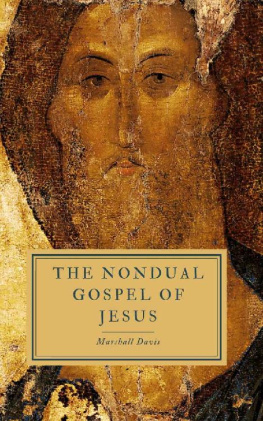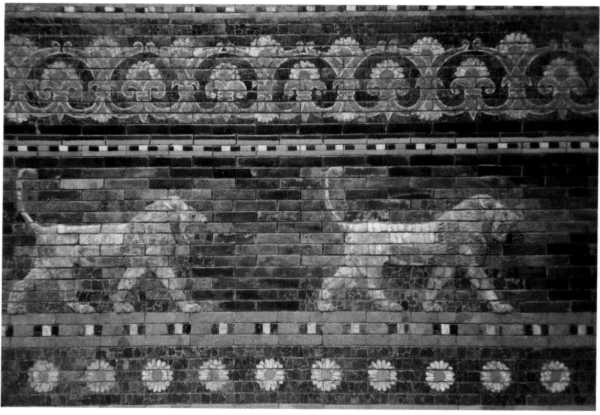The Social Gospel of Jesus
The Social Gospel of Jesus
The Kingdom of C.~od in Mediterranean Perspective
Bruce J. Malina




FOR
JERRY H. NEYREY, S.J.
FELLOW CARDIOPHILE,
CONGENIAL COLLEAGUE,
INSIGHTFUL COLLABORATOR,
ASSIDUOUS STUDENT OF THE WORD OF GOD
CONTENTS
ix
xiii
FOREWORD
Vry few scholars are given the opportunity to make fundamental changes in their field of study and, when presented with such an opportunity, even fewer have the courage and fortitude it takes to introduce such change.' Pioneers in any academic endeavor must contend with entrenched principalities and powers, well-established methods, and the so-called "assured results" of previous study. This is as true of biblical studies as it is of other academic endeavors. Scholarship is, in many ways, resistant to change, and scholars often resent innovation in their fields of study.
It is a tribute to Bruce Malina's character, creativity, and cussed perseverance that, when he was provided with such an opportunity, he took it, and New Testament studies have not been the same. When he published The New Testament World: Insights from Cultural Anthropology (1981, rev. ed. 1993), he made a significant contribution to a paradigm shift in biblical studies. In this role, he was part of a pioneering group of scholars, including Richard L. Rohrbaugh (The Biblical Interpreter, 1978), Gerd Theissen (Sociology of Early Palestinian Christianity, 1978), Norman K. Gottwald (The Tribes of Yahweh, 1979), and John H. Elliott (A Home for the Homeless, 1981),2 all of whom were discovering and exploring the possibilities of using the social sciences to interpret biblical texts and to reconstruct the world in which those texts were written. By the mid-1980s, two volumes of Semeia (35 and 37) were devoted to this new "social-scientific criticism" of the New Testament and the Hebrew Bible and, by the end of the decade, social-scientific criticism had found a place in biblical studies.
In furthering this project, Malina's productivity has been truly remarkable. He has written monographs on a wide variety of subjects, including an application of the work of Mary Douglas to biblical studies,' a study of the book of Revelation,' and collections of essays on specific themes and topics related to the study of the historical Jesus and the Gospels.' In addition to these studies, he has written articles too numerous to mention, illuminating specific issues in the biblical world in the light of the social sciences. Many of them are mentioned in the bibliography found at the end of this present study. But Bruce Malina is more than an isolated scholar; he is a leading voice in a movement in biblical studies, and he has conducted himself accordingly. He has, for example, worked cooperatively with a number of colleagues. His collaborative work includes two commentaries written with Richard L. Rohrbaugh,' two studies co-authored with Jerome H. Neyrey, and a handbook coedited with John J. Pilch.' This commitment to collegial and collaborative work has marked Bruce's scholarly career, and it has placed a distinctive stamp on the field of New Testament studies. To encourage cooperative work among biblical scholars using the social sciences, Malina helped to form "The Context Group," a gathering of scholars that meets to provide peer reviews of works in progress and to facilitate sharing of research and bibliographic resources. In this setting, Malina has generously encouraged the work of younger scholars.
I first heard of Bruce through one of his students who came to the seminary in Berkeley where I was then teaching. When the student took my New Testament Introduction course, he seemed to be extremely well versed in the New Testament world and, when I asked him how he had gained so much knowledge, he began to praise one of his undergraduate religion teachers at Creighton University. I had never heard of Bruce Malina, but, at the student's urging, I arranged for him to do a lecture at the Graduate Theological Union in Berkeley. He was an immediate success. His first lecture changed the way I would approach the New Testament, and I have never seen it the same way again.
At a recent meeting of a scholarly society, Bruce and I were talking about projects on which we were engaged when a colleague came up to greet him. "What are you working on these days?" she asked. Bruce paused for a moment and said, "I'm just doing Bible study. That's all. Just doing Bible study." After a moment of embarrassed silence, the colleague faded back into the crowd, no doubt thinking that Bruce had taken leave of his senses. At the time, I thought he was making an impertinent remark; but I have had time to reconsider. If one of the fundamental tasks of biblical interpretation is to understand the biblical text in its own world, then Malina is truly engaged in Bible study at its most basic level. The chapters in this volume illustrate the point quite well. Jesus' proclamation of the kingdom of God has a scholarly history that, in shorter historical perspective, spans the twentieth century. But rarely have the participants in the discussion asked the most basic of questions: What would it mean to ancient Mediterranean peoples to hear such a proclamation? What would the phrase "the kingdom of God" mean to an ancient Mediterranean person? Malina begins his study of the Bible by asking just such basic questions and, because he asks what seem to be the most obvious questions, even though they have been overlooked or ignored as unimportant, his study will change the way we view biblical texts and the world of the Bible.
Malina's work embodies a paradox. It is only when we place biblical texts in their own world that they are freed to speak to ours, for the kind of study that Malina does prevents us from projecting our world onto the biblical world, thereby depriving it of the opportunity to speak its own distinctive, strange, and even alien "word" to us. This is why Malina has not been hesitant to criticize "the received view" and identify "what it cannot do."9 His project has been to deconstruct as well as reconstruct an approach to biblical studies.
It is, therefore, appropriate to conclude this Foreword with an invitation and a warning. If you would like to see Jesus' proclamation of the kingdom of God in a new, refreshing, and unconventional way, please read on. But beware! You will never see the Bible in the same way again. That is the gift and challenge of Bruce Malina's scholarly career.
-WILLIAM R. HERZOG 11
1. This foreword is based on remarks made to the Colgate Rochester Divinity School/Crozer Theological Seminary community when Malina came to deliver the 1999 Walter Rauschenbusch Lectures. It was my pleasant duty to introduce Bruce and his work.
2. The publishing information is as follows: Bruce J. Malina, The New Testament World: Insights from Cultural Anthropology (Atlanta: John Knox, 1981; rev. ed., Louisville: Westminster John Knox, 1993); Richard L. Rohrbaugh, The Biblical Interpreter: An Agrarian Bible in An Industrial Age (Philadelphia: Fortress Press, 1978); Gerd Theissen, Sociology of Early Palestinian Christianity (Philadelphia: Fortress Press, 1978); Norman K. Gottwald, The Tribes of Yahweh: A Sociology of the Religion of Liberated Israel, 1250-1050 B.C.E. (Maryknoll: Orbis, 1979); and John H. Elliott, A Home for the Homeless: A Sociological Exegesis of I Peter, Its Situation and Strategy (Minneapolis: Fortress Press, 1981; 1990). The issues of Semeia are: John H. Elliott, ed. Semeia 35: Social-Scientific Criticism of the New Testament and Its Social World (1986); Norman K. Gottwald, ed. Semeia 37: Social-Scientific Criticism of the Hebrew Bible and Its Social World: The Israelite Monarchy (1986).















